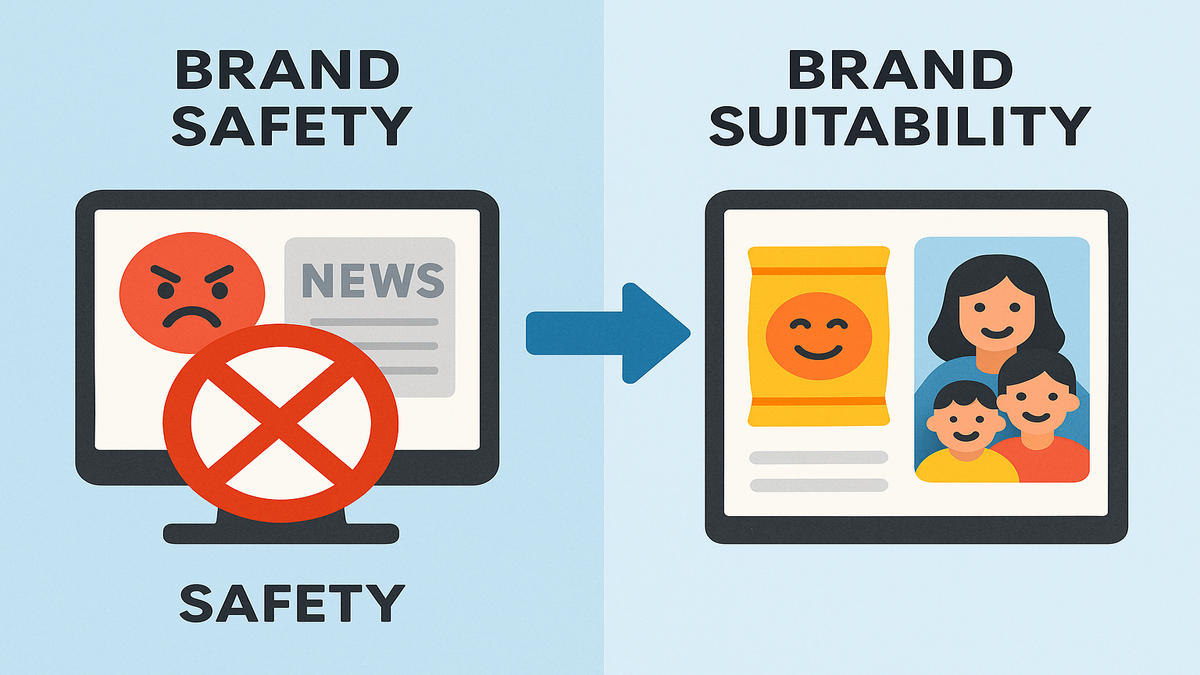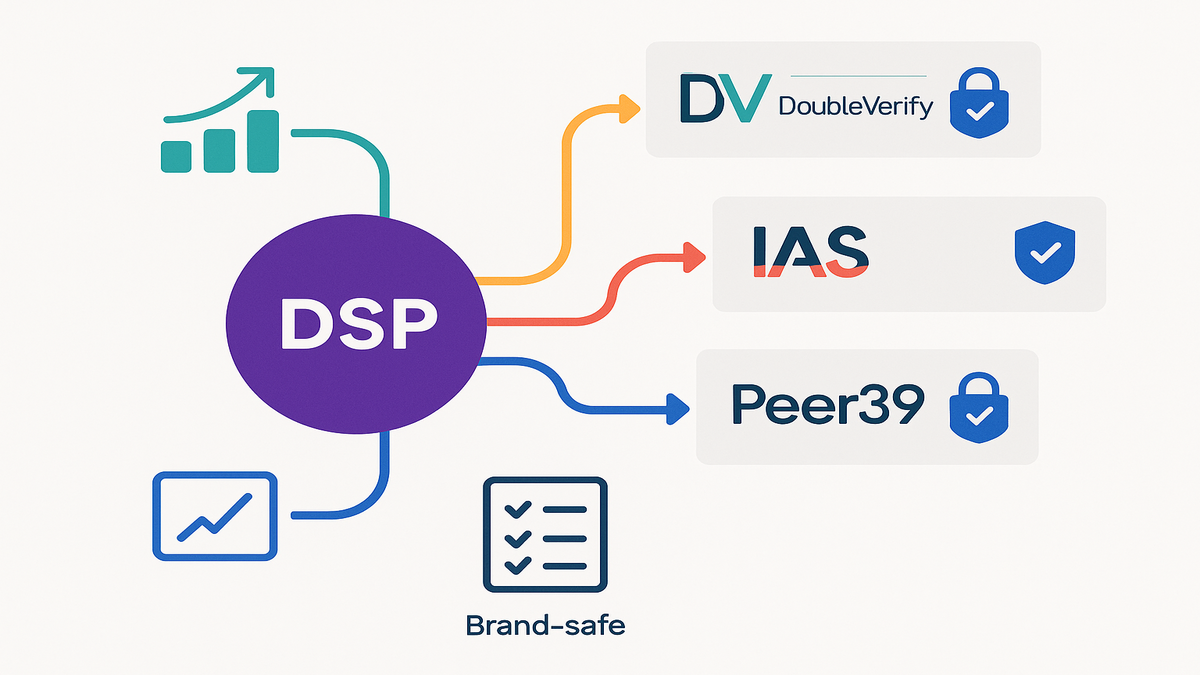
Unlock Brand Safety in DSPs: Suitability Settings Demystified

Ever had your ad show up next to something weird or wild? Yeah, that “uh, nope” feeling is real. You’re not the only one. Every DSP marketer out there wishes their brand never lands where it doesn’t belong. It’s not just about being embarrassed either. Messy placements can mess with your brand’s rep — and your wallet. One bad spot can turn into a wave of trouble fast.
But hey, it’s 2024. Stuff changes. "Brand safety" isn’t just blocking hate speech or obvious junk. It goes way deeper now. You need your ads in the right places, with the right people, next to content that matches what you’re about. DSPs like Amazon and Adobe are adding these new beta controls, so the game’s changing for everyone.
These new controls sound cool, but let’s be real—they’re tricky at first. You’ll hit bumps figuring them out. Let’s pull back the curtain. What’s really working? What’s just hype? And how are the top brands already making these tools work? Let’s get your message out there—no awkward placements, no wasted money.
Imagine: your ad pops up next to an off-color meme. Pure panic. Now imagine having a remote control for your ad’s context. Welcome to the world of DSP beta controls.
Key Takeaways:
- New DSP tools don’t just block trouble. They fine-tune your brand voice to fit.
- Right now, beta brand controls are live on Amazon DSP, Adobe DSP, and more.
- There’s API access for blocking publishers, topics, and context—no waiting around.
- Third-party partners (like DoubleVerify, IAS, Peer39, etc.) help you control ads across all your channels.
- Early users get faster campaign tweaks and fewer brand slip-ups.

Why Suitability Beats Safety
From Dodging Disaster to Defining Your Voice
Back in the day, “brand safety” just meant: Don’t let my logo near the creepy stuff. Hate speech, fake news, or that viral cat video that’s… not really that funny. That was just the minimum. Now, “safe” isn’t good enough. The new goal is suitable—and that’s a much higher bar.
Say you make a friendly snack for families. Sure, it’s "safe" to run ads on world crisis news. But is that really a fit? Does a happy chips ad look good buried between sad headlines? Nope. It feels off, and people notice when brands miss the mark.
Expert Anna Holmes keeps it simple: “Suitability is about the details. Line your ad up with stuff that lifts your brand, not drags it down. Blocking the worst is good, but picking the best spots is better.” Today, getting those details right totally changes how folks see your brand.
Brand Voice Wins
Let’s be honest—bold brands (like Wendy’s, Liquid Death, and meme masters) sometimes want edgier spots. Others stay chill and cozy. Modern suitability settings help every brand find their voice—it’s not just about dodging bad stuff. Now you can target the fun, on-brand content. Or stay out of risky zones, if that’s your thing.
If you’re all about next-level DSP strategy, peek at advanced Amazon DSP services. Push your ads further.
What’s Inside: Beta Features
API Power: Instant Fine-tuning
With open beta, advertisers get super detailed controls. Right from the API. Here’s what’s up:
- Advertiser-level settings: Set rules once and every campaign follows them. Block politics or tabloids? One click, done.
- Ad-group settings: Want your spicy new flavor ads in spicier spots? Adjust just those ads.
You use stuff like brandSafetyTierInheritedSettingDetails for this. And changes are instant. No more waiting for UI lags or slow updates. Tweak a blocklist or make a change and it applies right now. So you can dodge headaches—or catch chances—without delay.
Super Specific Filters
The tools today can filter stuff in wild detail:
- Block hunting or guns, sure—but not all sports?
- Avoid certain publishers, not the whole category?
- Want ads safe from certain keywords (or near others)?
You can fine-tune with topic, publisher, or keyword filters. Check and block placements before or after a campaign. Or slice into deep reports—super useful on platforms like Twitch, where what’s “ok” can change every hour.
Lisa Tran from Amazon DSP says: “Advertisers used to fear getting surprised. Now, they can check placements, block on the fly, and get detailed reports. That’s key on Twitch, where each community is its own world.” Panic is out. Prevention is in.
Heavy Hitters: Integrations
DoubleVerify, IAS, and More
Modern DSPs know nobody just takes their word. So, the best ones work with big-time verifiers:
- DoubleVerify: Real-time checks, custom rules, auto-blocking. They catch risky stuff fast.
- IAS (Integral Ad Science): Flags weird content or fraud. Handles billions of checks each day.
- Peer39: Looks at keywords and mood and tone, not just what’s on the surface.
- Pixalate, Comscore: Block fraud, score content, and make sure you’re hitting the right crowd.
Most of these tools block stuff before your ad can even bid. That way, you’re not just protected—you’re ahead of the mess, guided by real data.
Custom Segments, Quick Changes
Not every brand wants the same controls. Now, you can build your own rules. Stuff like, “never run next to rival snacks” or “skip drama, but opinion blogs are fine.” Change things anytime and updates ripple out instantly—no more messy file uploads.
Global brands can even tweak by region or language. One setting, and boom—it’s live everywhere. Super handy for worldwide campaigns.
Amazon vs. Adobe DSP
Amazon DSP
Amazon DSP has its own playground: Twitch, Audible, IMDB TV—you get it. Because they own these, their suitability controls are super tight:
- Built-in verification: Keeps your ad out of weird places. Always.
- Serious integrations (DoubleVerify, IAS, Oracle, etc.) for instant action and accuracy.
- Automated blocks save your ops team a headache. Block bad categories or keywords in seconds.
Early test users said wasted campaign spend dropped 23% (Amazon, early 2024). That’s more money on the right stuff, less time fiddling with filters, and fewer “SOS!” moments for your media team.
Adobe DSP
Adobe DSP is all-in on flexibility and central control. They make it seamless to use verifiers like DoubleVerify, stack up filters, and block the weird stuff:
- Set global controls once. Reuse them on every campaign. No copy-pasting.
- Block before you buy and mix verification partners for more coverage.
Advertisers love that they can run A/B tests and measure results clearly. Adobe’s beta links suitability controls right to real brand lift scores, so you can literally see ROI go up, not just hope.
Bonus: fewer "Why’d my ad end up THERE?" messages, thanks to those flexible reports and controls.
How It Works in Real Life
Imagine a drink brand for Gen Z aiming at Twitch and YouTube. Amazon DSP lets you keep drink ads off political streams, but everywhere in big gaming shows. Adobe DSP? Set up region or product filters fast, and see the impact in your stats right away. Early users in Q1 2024 saw 21% fewer off-brand placements. Clicks went up, ROI too (Adobe data, 2024).

Still Beta: Gotchas
The Hidden Stuff
Don’t pretend it’s perfect. Beta is still beta, and here’s what to watch for:
- Missing Features: Not all ads get every control yet. Some video, native, and mobile stuff is rolling out slow, not on Twitch yet.
- Surprise Costs: Extra tools (DoubleVerify, Peer39, etc.) cost more. Keep an eye on the bill.
- Frequent Tweaks: Beta means UI changes a lot, endpoints move, and sometimes it’s buggy. Fast is good, but you still gotta pay attention.
DSP expert Gary Pollard sums it up: “If you want to steer your brand, be hands-on. Betas change fast. ‘Set and forget’ doesn’t exist yet. Keep watch.”
You Still Need Human Eyes
As good as automated filters are, nothing beats checking yourself. Dive into publisher reports every week, keep lists fresh, and mind what’s trending. New channels pop up all the time. Sometimes you need to throw a manual block, just in case.
Quick Recap: 2024 To-Do List
- Modern DSPs let you pick what fits, not just avoid disasters.
- APIs and real-time feedback give instant, smooth tweaking.
- Top verification partners give you real peace of mind.
- Beta isn’t perfect, but it’s evolving fast—early adopters are already winning.
Stay Sharp: Suitability Blitz
- Check where your ads land now. Spot the weird ones.
- Set up advertiser and group rules through API for more control.
- Choose verifiers (DoubleVerify, IAS, Peer39, etc.) and use their segments across campaigns.
- Review publishers and block reports every week. Update as stuff changes.
- Write down what works. Push tweaks. Watch for more beta launches—especially for mobile and native.
FAQ: Suitability Answers
- Brand safety vs. suitability — what’s the diff?
Brand safety is blocking the truly bad stuff—hate, violence, adult content. Suitability is dialing in what actually matches your brand’s vibe.
- Do I need a developer to use suitability settings?
Not always. Basic stuff lives right on the dashboard. If you want serious custom power, some coding is nice, but not a must.
- How do third-party folks like DoubleVerify help?
They scan placements before and after bidding, blocking stuff you don’t want. This way, you handle problems before they cost you.
- Does beta work on all ad types?
Nope—not yet. Most progress is on Display and Video (Twitch, big streaming sites). Mobile and native are getting there. Always check the DSP docs for updates.
- Will costs rise with extra suitability?
Sometimes, especially with premium tools like DoubleVerify. Keep an eye on it, but usually you save more by avoiding junk.
- How often should I check suitability settings?
Weekly is smart in beta times. Later, once things settle, you might slow down, but regular check-ins stop nasty shocks.
If you’re not picking your brand’s spots, someone—or some algo—will. The best advertisers claim their space, use smart beta tools, and get real results. Don’t leave your brand to luck.
Need better workflow? Try our AMC Cloud platform for analytics and controls to keep ahead.
Want deeper DSP tips? Check Amazon Attribution and Brand Lift Study. Want your message consistent everywhere? Here’s the Facebook Business Manager guide.

